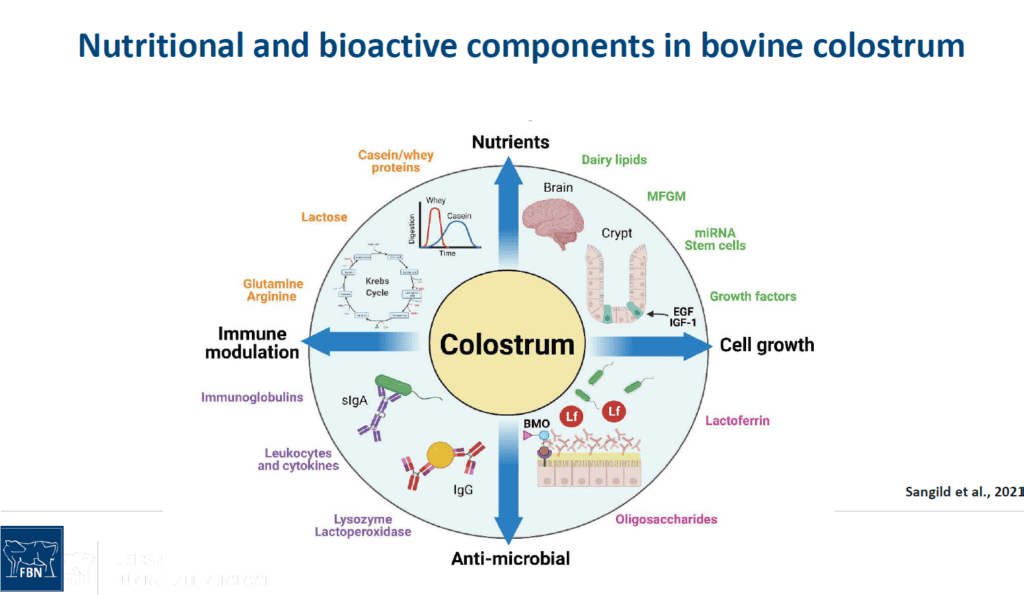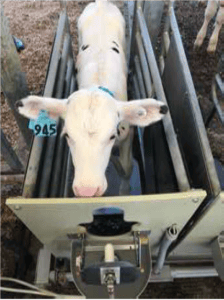Smart Calf Rearing Conference

This is the second installment on the proceedings of the 2023 Smart Calf Rearing Conference. Check the calf blog for the first one if you haven’t already read it. This installment features a summary of the presentations in Nutrition, Behavior and Sustainability of our Calf Management Systems.
Nutrition
Dr. Michael Steele from the University of Guelph (masteele@uoguelph.ca) focused his discussion on the impact of early life programming and the impact on growth, development, health and later performance of the dairy animal.
· Bioactives which include immunoglobulins, insulin, IGF, epidermal growth factor, leukocytes and many other hormones and compounds are present in significantly higher amounts in the first milkings after calving. Feeding more than one meal of colostrum or transition milk to the calf has been shown to have a profound influence on development and function of the intestine and on health and growth.
· Feeding a higher fat diet (>20%) during the first week of life enhances gain and feed efficiency. This is logical given that milk, on a powder basis, has more than 28% fat.
· Abrupt weaning rather than step down weaning results in higher fecal starch, which may create a less desirable environment for digestion in the intestine.
· A higher plane of nutrition preweaning results in enhanced growth both pre and post weaning. Feeding 2 or more lb (~900 g) of milk solids, particularly during the first 30 – 45 days of life.
Dr. Harald Hammon (hammon@fbn-dummerstorf.de) from the Research Institute for Farm Animal Biology in Dummerstorf, Germany presented research which complimented many of the principles noted by Dr. Steele. These relationships are shown in the following slide (Sangild et al., 2021).

- Colostrum feeding soon after birth stimulates bacterial colonization of the small intestine. Heat treated colostrum promotes colonization by Bifidobacteria and reduces colonization by E. coli.
- Colostrum may act as a natural prebiotic (oligosaccharides) that promotes establishment of beneficial bacteria. (Mahlmuthuge and Guan, 2017)
- More liberal preweaning feeding regimes appear to stimulate mammary development as well as recovery and resistance to Cryptosporidium, Salmonella and respiratory disease.
- Ad libitum milk feeding accelerates postnatal growth and has no long-lasting negative effects on rumen growth and development, but the weaning process needs more time and step down or gradual reduction in milk for greatest success. Considerable research in Europe indicates benefits to weaning at ages >12 weeks of age.
Dr. Christian Koch from Hofgut Neumuhle (c.koch@neumuehle.bv-pfalz.de) presented research from their institution and others which examined the potential impact of acidosis in calves, particularly those weaned by 8 weeks of life. When weaning was initiated at 6 weeks of age, there is a substantial reduction in ME intake that does not recover for several weeks.
Calf behavior

Dr. Joao Costa from the University of Vermont ( Joao.Costa@uvm.edu) and Dr. Emily Miller-Cushon emillerc@ufl.edu ( ) presented research on social housing and the interaction between environment, nutrition and the concept of individualized management of the preweaned calf.
- Abnormal behaviors develop in the absence of adequate amounts of milk allowance, sucking opportunities and environmental complexity.
- Early pair housing of calves’ results in earlier and higher grain intake and average daily gain.
- Pair or group housing systems foster earlier “learning” and improved adaptability to new feeds and new situations as calves which continues in later life.
- Grain intake pre and post weaning was not different in calves allowed to consume 6, 8, 10, or 12 L of milk / day.
- However, grain intake by calves is very variable in ad libitum milk feeding management systems. Why does grain intake vary so much? Genetic, Temperament, Forage intake ???? Do computer assisted milk feeding systems enable individualized feeding programs?
- Provision of hay preweaning reduces the incidence of pen directed sucking.
- There are considerable opportunities to utilize feeding behavior data from automated feeding systems in the early detection of disease and/or the response to different treatment regimes.
- The next step in precision dairy technology is to use deep learning models for detecting disease in a timelier manner.
- The provision of an inside shelter in a group pen was utilized more frequently for calves that had been disbudded than those not disbudded.
Dr. Jennifer Van Os from the University of Wisconsin-Madison (jvanos@wisc.edu) discussed guides to pair housing calves, the impact of housing system on response to heat or cold stress and consumer perceptions of calf management systems by the consumer.
- When offered two calf hutches calves usually preferred to use one hutch.
- Housing systems paired housing may help calves deal with cold stress.
- Provision of ventilation to calves during heat stress conditions in calf hutches shows promise for cooling calves, but there are challenges to implement in practical management situations on most dairy businesses.
- Provision of nutritional enrichment (more milk, grain or hay) is essential to reducing cross sucking.
- Consumer perception of calf management systems will be an important factor in sustainability of dairies. Surveys demonstrated their preference for group or pair housing systems compared to individual housing. However, consumers strongly favor maintaining the calf with their dam.
Sustainability of our Calf Management Systems
The three participants provided a broad but interconnected view of the challenges faced in our calf management systems along with logical approaches to addressing them.
Dr. Caroline Ritter (carolineritter@upei.ca) from the University of Prince Edward Island / Atlantic Veterinary College noted that sustainability must be addressed from an environmental, social and economic perspective. The challenge that we face is that society is increasingly lacking biological and agriculture reference experience. If agriculture doesn’t self-regulate then society will intervene and regulate, which can be especially difficult in many of our production systems. Key points which must be considered in future systems are calf housing systems, dealing with “surplus” calves and cow calf separation. The use of beef sires on lower ranking dairy animals is an example of dealing with the “surplus” calf problem to provide a more desirable and profitable source of beef.
Dr. Wolfgang Heuweiser (w.heuwieser@fu-berlin.de) from the Freie Universitat in Berlin has had considerable experience with a focus on farm employee training via the Kalberschule he developed. Surveys of dairy businesses and his experiences reveal that most farms have job descriptions, but few are written down and effectively utilized. The goal in employee training is to facilitate consistency, quality, communication in the onboarding process for new employees.

Dr. Javier Martin Tereso (Javier.Martin-Tereso@trouwnutrition.com>) from Trouw Nutrition provided a fitting conclusion to the conference presentations in discussing how dairy fits into the food ecosystem and that dairy products play a critical role in meeting the energy and protein needs of a growing world population. He noted that 86% of the nutrient needs of dairy animals are nonedible by humans while achieving a 32% efficiency in nutrient conversion. Improvements in reducing greenhouse gas emissions and the carbon footprint point towards a role for dairy in meeting the world’s needs for energy and protein.
This conference represented one of the most comprehensive programs on dairy calf management including the most current research on calf biology as well as critical issues influencing the sustainability of our industry.
For further information on information presented at the Smart Calf Rearing Conference contact the presenters using the email addresses provided or by contacting Ms. Maria Francese at Foerster Technik Maria.Francese@foerster-technik.de. The next Smart Calf Rearing Conference is scheduled to be held in 2025 on a date and location to be determined.

